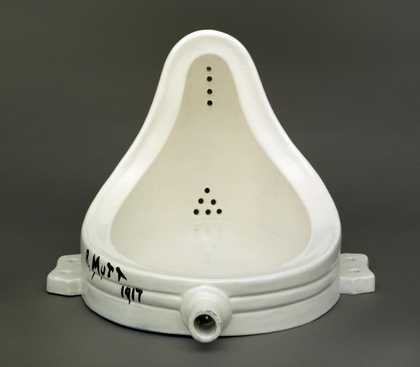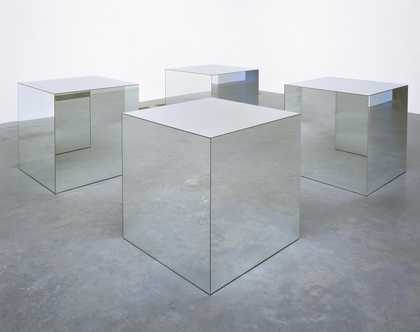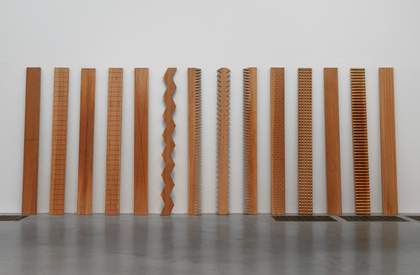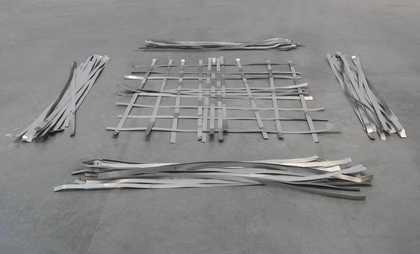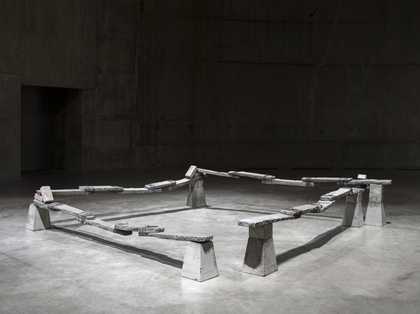
Lee Ufan at work in his Paris studio, February 2014
Photograph © Simon Grant
The movement, led by the artists Lee Ufan and Nobuo Sekine, was one of a number of groups engaged in ‘not making’. Founding member Lee observed that an artist’s ability to make things had been nullified by technology. As a result he rejected traditional ideas of representation in favour of revealing the world as it is by engaging with materials and exploring their properties. In 1968 Sekine displayed a 2.7 metre-high tower of dirt next to an identically shaped hole in the ground as an illustration of this concept.
Other artists related to the mono-ha movement include Susumu Koshimizu, Kishio Suga and Noriyuki Haraguchi.
The name mono-ha was coined slightly derogatorily by a journalist in response to the lack of polish and perceived lack of skill displayed in the making of the work. As the movement gained international recognition, and through its association with arte povera, mono-ha came to be widely respected as a movement that was critically engaged.


